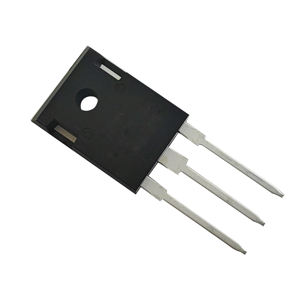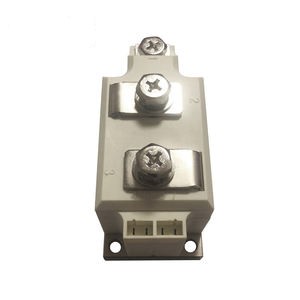Thyristors Online | High-Quality Power Semiconductors
**”The Pulse of Power: Unraveling the Secrets of Thyristor Dynamics”**
(Functional Dynamics of Thyristors: An Exposition on Operation)
In the electrifying world of electronics, where currents flow like rivers and voltages rise like mountains, there exists a silent yet mighty guardian of power control—the thyristor. This unassuming semiconductor device, often overshadowed by its flashier cousins like transistors and diodes, holds the key to managing energy in ways that are nothing short of magical. Today, we dive into the heart of thyristor dynamics, exploring how this tiny titan operates and why it’s a cornerstone of modern power systems.
Imagine a switch that doesn’t just turn things on and off but does so with precision, timing, and an almost poetic sense of control. That’s the thyristor for you. At its core, a thyristor is a four-layer semiconductor device that acts like a gatekeeper for electrical current. It’s not just a simple on-off switch; it’s a master of timing, allowing current to flow only when the conditions are just right. Think of it as a bouncer at an exclusive club, letting electrons in only when they’ve been properly invited.
The magic begins with a small trigger—a tiny pulse of current applied to the thyristor’s gate. This pulse is like the first domino in a chain reaction. Once triggered, the thyristor latches on, allowing a much larger current to flow through it. But here’s the kicker: once it’s on, it stays on, even if the trigger is removed. It’s like a light switch that, once flipped, refuses to turn off until the power is cut entirely. This latching behavior is what makes thyristors so powerful in applications like motor control, lighting systems, and even high-voltage power transmission.
But the thyristor’s story doesn’t end there. Its ability to handle massive currents and voltages makes it a hero in the world of power electronics. Picture a massive industrial motor, spinning at thousands of revolutions per minute. Without a thyristor, controlling its speed would be like trying to tame a wild stallion with your bare hands. But with a thyristor in the circuit, you can dial in the exact speed you need, smoothly and efficiently. It’s like having a remote control for power, allowing engineers to fine-tune systems with surgical precision.
And let’s not forget the thyristor’s role in renewable energy. In solar inverters, for example, thyristors help convert the direct current (DC) generated by solar panels into the alternating current (AC) that powers our homes. They’re the unsung heroes of the green energy revolution, quietly ensuring that the sun’s energy is harnessed and delivered with maximum efficiency.
(Functional Dynamics of Thyristors: An Exposition on Operation)
So, the next time you flip a light switch or marvel at the smooth operation of an electric train, take a moment to appreciate the humble thyristor. It may not be the star of the show, but without it, the world of electronics would be a far less dynamic and exciting place. In the grand symphony of power, the thyristor is the conductor, ensuring that every note is played with perfect timing and precision. And that, dear reader, is the pulse of power—unseen, uncelebrated, but utterly indispensable.


